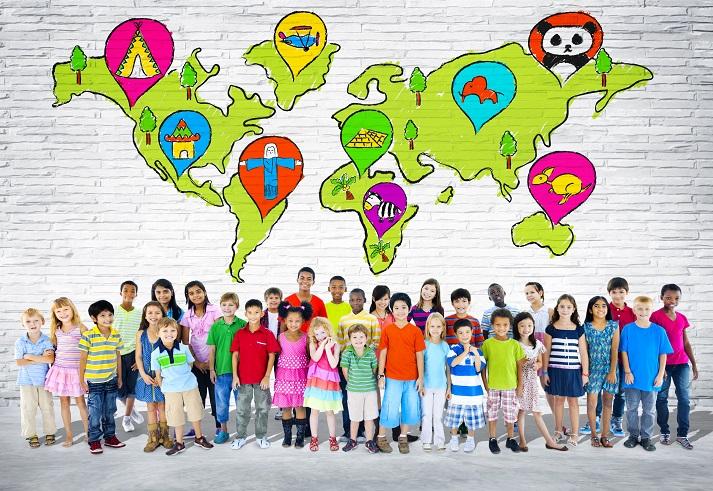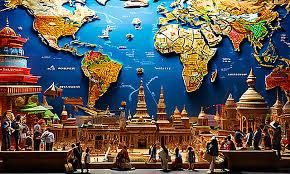In what ways has globalization impacted cultural practices and traditions around the world?

Globalization has significantly impacted cultural practices and traditions worldwide, leading to both positive and negative outcomes.
Here are some key ways globalization has influenced cultures:
1. Cultural Exchange and Hybridization
- Fusion Cuisine: The blending of culinary traditions from different cultures has led to new, hybrid dishes and fusion restaurants, such as sushi burritos or Korean tacos.
- Fashion: Traditional garments and designs have influenced global fashion trends, resulting in a mix of styles, like Western clothing incorporating African prints or Indian motifs.
2. Preservation and Revival of Traditions
- Digital Archives: Globalization has facilitated the preservation of cultural heritage through digital archiving, allowing traditional music, dances, and languages to be documented and shared worldwide.
- Tourism: Increased global tourism has led to a renewed interest in preserving cultural sites and traditions, as these become key attractions for visitors.

3. Cultural Homogenization
- Fast Food Chains: The global spread of fast food chains like McDonald's and Starbucks has impacted local dietary habits and food cultures, sometimes leading to the decline of traditional culinary practices.
- Media and Entertainment: The dominance of Western media has influenced global entertainment preferences, often overshadowing local traditions and narratives with Hollywood movies and popular TV shows.
4. Economic Opportunities and Challenges
- Artisan Markets: Global markets have provided artisans with new opportunities to sell traditional crafts online, helping to sustain and promote traditional arts.
- Economic Pressure: Global economic pressures can lead to the commercialization of cultural practices, where traditions are altered or commodified to appeal to international markets.
5. Social and Cultural Awareness
- International Festivals: Cultural festivals, like Diwali or Chinese New Year, are now celebrated in many countries, increasing cross-cultural awareness and appreciation.
- Education: Exposure to different cultures through travel, media, and education has fostered a greater understanding and respect for cultural diversity.

6. Standardization and Loss of Diversity
- Language: The spread of dominant languages like English has led to the decline of indigenous languages, with many becoming endangered or extinct.
- Architectural Styles: The global adoption of modern architectural styles can lead to a loss of traditional building techniques and designs, resulting in homogeneous urban landscapes.
7. Technology and Communication
- Social Media: Platforms like Instagram, TikTok, and YouTube enable the sharing of cultural practices and traditions, allowing for greater visibility and exchange.
- Online Learning: Access to online resources and courses has enabled people to learn about and participate in cultural practices from around the world, such as virtual yoga classes or cooking tutorials.
8. Cultural Appropriation and Sensitivity
- Fashion and Art: The adoption of cultural symbols and practices by mainstream fashion and art can lead to cultural appropriation, where the original meaning and significance are lost or misrepresented.
- Awareness and Activism: Globalization has also led to greater awareness of cultural appropriation, prompting movements towards cultural sensitivity and respect.

Examples of Globalization's Impact on Cultural Practices
- Yoga (India): Yoga has become a global phenomenon, often adapted and commercialized in various forms, which sometimes leads to the dilution of its traditional spiritual and philosophical aspects.
- K-Pop (South Korea): The global popularity of K-pop has brought Korean culture to the forefront, influencing global music, fashion, and beauty standards, while also incorporating elements from various other cultures.
- Carnival (Brazil): Brazilian Carnival, with its vibrant music and dance, has influenced festivals worldwide, leading to similar celebrations that blend local traditions with Brazilian elements.
Positive Impacts
- Enhanced Cultural Understanding: Greater exposure to diverse cultures fosters mutual respect and understanding.
- Economic Benefits: Cultural exchange can lead to economic growth through tourism, global markets for traditional crafts, and international collaborations.
Negative Impacts
- Loss of Cultural Identity: The dominance of global cultural norms can erode local traditions and identities.
- Cultural Dilution: Traditions may become commercialized and lose their original meaning and significance.
Share your own culture comments, pictures and video.
Globalization has brought cultures closer together, enabling the exchange and blending of traditions and practices. However, it also poses challenges to the preservation of cultural diversity and authenticity. Balancing these influences is crucial to maintaining the richness of the world's cultural heritage.
Commandité
Rechercher
Catégories
- Questions and Answers
- Opinion
- Story/Motivational/Inspiring
- Technology
- Art
- Causes
- Crafts
- Dance
- Drinks
- Film/Movie
- Fitness
- Food
- Jeux
- Gardening
- Health
- Domicile
- Literature
- Music
- Networking
- Autre
- Party
- Religion
- Shopping
- Sports
- Theater
- Wellness
- News
- Culture
- War machines and policy
Lire la suite
Propane Market, Growth In Depth Research, Advancements, Statistics, Facts And Figures By Forecast by Fact MR
The global propane market is valued at US$ 92.3 billion in 2023 and is forecasted to reach US$...
Nike Dunk High:啟動你的潮流引擎
Nike Dunk High 是 Nike 旗下備受矚目的經典鞋款之一,自發布以來便以其獨特的設計和卓越的穿著體驗,成為了時尚圈和運動圈的寵兒。無論是街頭潮人,還是熱衷於籃球運動的玩家,Nike...
Rapid Keto ACV Gummies Official Reviews 2024
Rapid Keto ACV Gummies Reviews is a ketogenic diet that is low in starches or calories and...
Europe High Temperature Coatings Market Outlook and In-Depth Study of Top Key Players: Insights by Fact MR
Consumption of high temperature coatings across Europe is estimated to reach a value of US$ 2.15...
Middle East Vertical Farming Market Expanding at a CAGR of 18.76% during 2022-27
Quick Overview of the Middle East Vertical Farming Market Analysis
The objective of the Middle...

